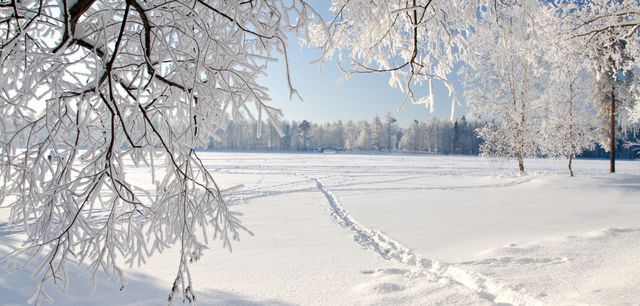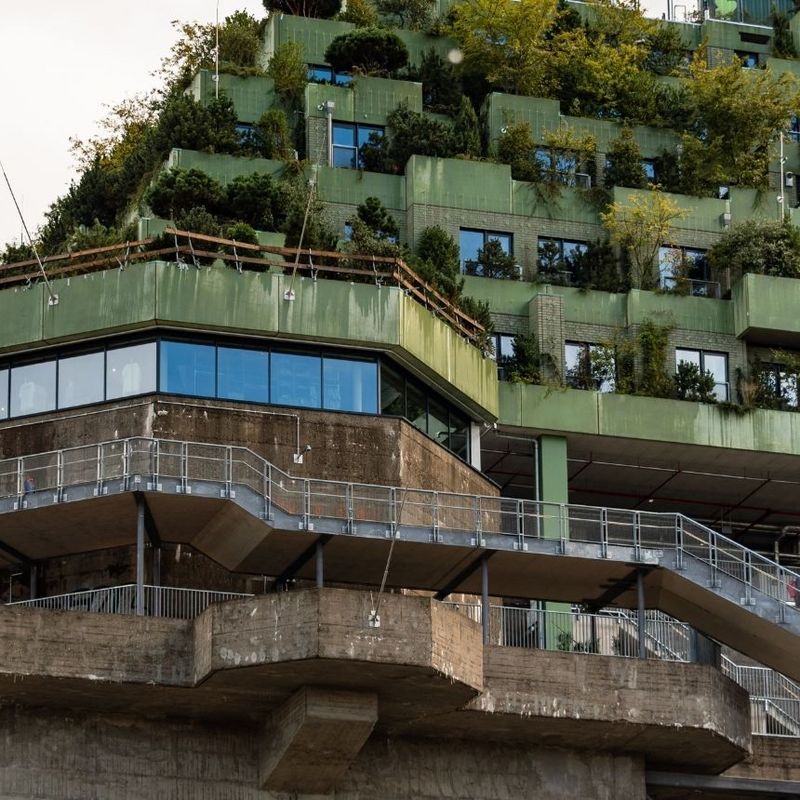04 January 2024
In early December 2023, heavy snow paralysed Munich’s central railway station and airport and caused travel chaos throughout Germany. For some people on the social networks, this was conclusive proof that there’s no such thing as humanmade climate change. But does heavy snow really undermine the case for global warming?
Climate experts agree about one thing: By itself, snow is no argument against rising global temperatures. This is because snowfall, however heavy it may be, is in the first instance a local and short-lived weather phenomenon. The word “climate”, on the other hand, describes the weather in its entirety over a longer period: weather statistics, in other words. And these show that it is getting warmer ever more quickly. No sooner is one heat record set, than another comes along: June 2023 was the second sunniest since records began in 1881 and the fourteenth June in a row of above average temperatures.
The speed of global warming is now ten times faster than the pace would be of natural climate change, says climate scientist Gudrun Mühlbacher from Germany’s meteorological office, Deutsches Wetterdienst (DWD), in an interview with current affairs show “der Tagesschau”. The ten warmest years in Germany since 1881 have all occurred within the last 30 years, nine of them in the 21st century. Whereas, before 2014, the annual average temperature in Germany never exceeded ten degrees Celsius, this threshold has been breached in five of the intervening years.
The winters are getting warmer, too. This means that the number of days on which snow falls and accumulates on the ground is decreasing. For the Bavarian town of Oberstdorf, the DWD’s data reveal that, between 1961 and 1990, the town was blanketed in three centimetres of snow on an average of 127 days in the year. Between 1991 and 2020, this figure fell to a mere 106 days.
A rare mass phenomenon
Even though snowfall is getting rarer overall, global warming can however still lead to massive volumes of the white stuff. The milder the winters get, the wetter they become – and the heavier the snowfall which is in principle then possible. Whereas precipitation in the summer has been decreasing significantly for years due to global warming, it is increasing in the autumn and winter. This is because every degree of warming allows the air to hold seven percent more water vapour. Higher summer temperatures often cause this to evaporate rather than fall as rain. In the autumn or winter, however – depending on the temperature – this moisture gets discharged as heavy rain or snowstorms.
(Overly) heavy snow
When it falls, snow can be a real nuisance – and not only for road, rail and air traffic. At higher temperatures, snow tends to be wet. Unlike dry and air-filled powder snow, it contains a lot of water and is therefore heavier. This “heavy” snow can place roofs and other infrastructure under real strain and push them to the limits of what they can hold. Just as we need to improve flood defences in some regions, we also need to equip our houses and roofs to deal with the changing winter weather.
When the mirror melts
Due to the rising temperatures, snow cover is becoming increasingly rare. This may in turn both accelerate climate change and exacerbate its effects. Snow and ice reflect a lot of sunlight back into space. If this natural mirror is no longer there, the sun’s rays are free to heat up the Earth. Climate change intensifies, the winters get even milder, and snow becomes ever rarer – a vicious circle.
The increasing absence of snow cover can also be a problem for plants. Whether they live in the Harz mountains, the Black Forest or the Eifel, at higher altitudes snow has for millennia served as a reservoir which releases its precious moisture slowly into the fresh carpet of green in the spring. But the huge variations in temperature which are now often a feature of our winters mean that the snow generally melts quite quickly. This increases the risk of flooding in the winter months. And, in the spring, thirsty plants have to make do with less water.
Chances of a white Christmas are dwindling
But climate change is also having a knock-on effect on the mood in the festive season. The chances of a white Christmas in Germany are dwindling all the time. According to meteorologist Uwe Kirsche from the DWD, the probability of a white Christmas in the north and west of Germany is already less than ten percent. Meaning that we can only expect a white Christmas every ten years on average. In other words, a wet and grey festive season like the one which has just gone is no longer the exception but, increasingly, the rule.



